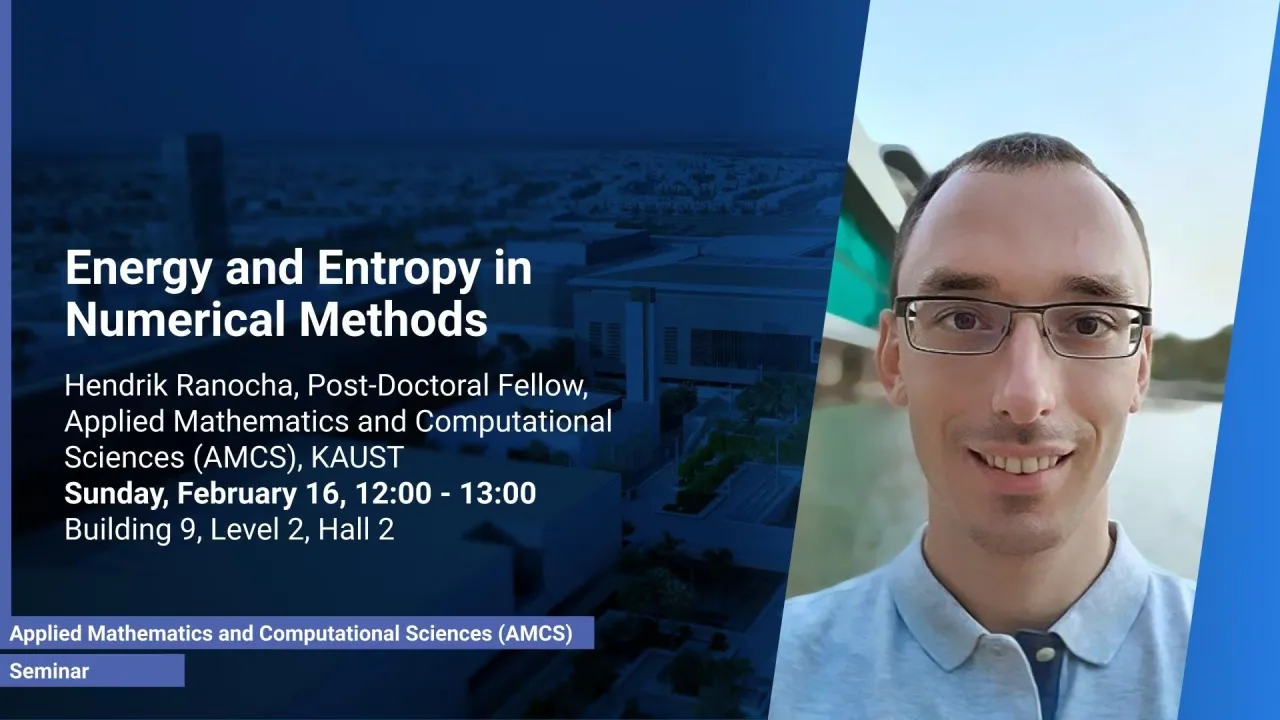
Energy and Entropy in Numerical Methods
Secondary quantities such as energy and entropy can be very important for numerical methods. Firstly, preserving these quantities can ensure that non-physical behavior is excluded. Secondly, preserving such quantities can result in stability estimates. Finally, preserving the correct energy/entropy evolution in time can result in additional desirable properties such as lower numerical errors. In this talk, a brief overview of some recent advances concerning energy and entropy preserving numerical methods for ordinary and partial differential equations will be given, together with an outlook on future research directions and applications.
Overview
Abstract
Secondary quantities such as energy and entropy can be very important for numerical methods. Firstly, preserving these quantities can ensure that non-physical behavior is excluded. Secondly, preserving such quantities can result in stability estimates. Finally, preserving the correct energy/entropy evolution in time can result in additional desirable properties such as lower numerical errors. In this talk, a brief overview of some recent advances concerning energy and entropy preserving numerical methods for ordinary and partial differential equations will be given, together with an outlook on future research directions and applications.
Brief Biography
Hendrik Ranocha started studying physics in 2010 in Germany. During his Bachelor's studies, he realized that many interesting problems can be attacked at best in interdisciplinary teams and his interest in numerical analysis was strengthened. Hence, he began to study mathematics, focussing on PDEs and numerical schemes without losing the point of view of a physicist. During that time, numerical methods have transformed from useful tools to subjects of research, up to his PhD in numerical analysis. After his PhD, he has worked as a Postdoc in Germany and in the group of David Ketcheson at KAUST. His main interest is in the stability of numerical methods for PDEs and ODEs. In particular, he has focussed on energy and entropy stability of numerical schemes for ordinary and partial differential equations. The basic idea is to obtain estimates at first at the continuous level, i.e. for a given initial boundary value problem. Thereafter, these estimates are transferred to semidiscrete or discrete schemes using mimetic properties and techniques such as summation by parts operators. In this way, numerical methods can be designed that respect some physical constraints and can have improved stability properties.
